Jim Keltner Talks Thirty Years of Drumming for Bob Dylan
Part 1: "Knockin' on Heaven's Door," Leon Russell, The Gospel Years, Traveling Wilburys
Flagging Down the Double E’s is an email newsletter exploring Bob Dylan shows of yesteryear. Subscribe here:
Update June 2023: This interview is included along with 40+ others in my new book ‘Pledging My Time: Conversations with Bob Dylan Band Members.’ Buy it now in hardcover, paperback, or ebook!
Jim Keltner drums for the sort of artists who can be referred to with one name. Neil. Joni. Mick. Elton. Willie. Tom. John…and George…and Ringo.
And, of course, Bob.
In fact, there are few musicians who have worked with Bob Dylan over a longer time period of time than Jim Keltner. They first met at a 1971 session where Keltner’s Leon Russell-led rhythm section backed Bob on “Watching the River Flow” and “When I Paint My Masterpiece.” It’s continued through the 2000s, when Keltner toured with Bob as a sudden fill-in when Dylan’s main drummer suffered carpal tunnel injuries.
And a lot happened in between. Keltner played drums for all three of Dylan’s “gospel years.” He played on a wide array of albums - Pat Garrett and Billy the Kid, Saved, Shot of Love, Empire Burlesque, Time Out of Mind - and assorted tracks in between. He became Bob’s go-to drummer for strange one-offs, from the Letterman 10th anniversary special to Japan’s Great Music Experience event where Bob played with a giant orchestra to, of course, the who’s-who of stars at Dylan’s 30th Anniversary Concert Celebration (aka. Bobfest).
Oh, and did I mention Jim was the sixth Traveling Wilbury? George Harrison even asked him to become an official member and Jim said no (but he still got his own Wilbury moniker: Buster Sidebury).
So when we hopped on the phone a month ago, there was a lot to cover. We didn’t hit it all, but over the course of a long, discursive, and fascinating conversation I tried to touch on as many of his times playing with Dylan as we could get to.
Today, the first half of my interview with Jim. In a few days I’ll run the second half, covering Bobfest, Time Out of Mind, Jim joining the Never Ending Tour without any rehearsal in 2002, and more. Subscribe here to get Part 2 sent straight to your inbox [update: it’s here]:
Was the first time you met Bob the '71 session with Leon Russell and those guys?
Yes. I was over in England with my family and got the call from Leon to meet up in New York with Carl [Radle, bassist] and Jesse [Ed Davis, guitarist].
I didn't realize at the time how important those guys were in my life, Leon, Jesse, and Carl. We were a rhythm section. I hadn't really done a tremendous amount of stuff yet at that point, but I was doing sessions, and they would be on a lot of them. I always loved the fact that we were all from Oklahoma. There was that little bond.
My memories of that session, they're like a dream really. I was sitting at the drums and Leon was playing and we all joined in. I looked over and I saw Bob standing facing the wall. I could see his lips moving. He was writing on a tablet, I think. I thought, "Wow, he's writing the lyrics as we're playing." He might have been adjusting some of the lyrics, rearranging some things to fit the groove. That blew my mind.
His phrasing and stuff is so unique. I just did an interview about Willie Nelson, and we were talking about phrasing being completely original and very much like a jazz player. As I was speaking of Willie, I felt like I was speaking about Bob. There's such a similarity in that they both are completely unique with their vocals, the way their voices sound, and the way they phrase. I put them both in a jazz category. They don't sing like the typical rock singer.
Hearing the playback was just extraordinary. It was like an out of body experience for me. That little song was “Watching the River Flow.” Even today when I hear it, it just thrills me. It takes me right back. Years later, I always wondered, what would have been if we had been a rhythm section for Bob on many, many things? That's not the way it worked out.
You mentioned him as almost a jazz vocalist. I know you started out doing jazz stuff. Do you think that's one way that you connected working with his music?
That's a strong possibility. It wouldn't have been a conscious thing. For me, playing with Bob has always been one of the most natural things I could do. Maybe you have hit on it. It may be this free feeling that you get when you're playing jazz, like you just need to know the song, know the form, and then go for it. Don't be afraid.
The thing that I love about Bob is his fearlessness. There's a fearlessness from some artists that translates to the musicians playing. When that happens, you get the best from the musicians, because the musicians are not worried about tempo or about whether they're rushing or they're dragging or whether they're not in the pocket. It’s not about finding a pocket. It's more about searching for the vibe, searching for the thing that makes the song have life.
I love being able to find a pocket and sit in it, but I also love the exploratory thing where you're letting the song bump you along instead of you bumping the song. It's a great thing that doesn't happen often enough.
For instance, the other day I was talking to my good friend Matt Chamberlain who’s playing drums currently with Bob. I’ve known Matt for a long time, since he was just basically starting. He was saying that Bob told him one time before they were recording, "Just play. Don’t try to find one thing and settle on it." I may not have gotten that exactly the way he said it, but basically what he was saying was what I’ve been telling you. Just let the music happen. Don’t be trying to find “a part” for the song. That’s pretty jazz-like. That’s the Bob Dylan that I’ve always known.
A couple years later you did “Knocking on Heaven's Door” and the Pat Garrett and Billy the Kid soundtrack. How does doing a session to soundtrack a movie differ from that first session?
In those days playing a song in a movie meant watching the film while you’re playing. I don’t think there’s so much of that anymore. The composer usually has everything mapped out.
With Bob, [“Knockin’ on Heaven’s Door”] was meant to hit your heartstrings hard, because it was a death scene. The shot would go back and forth from the actress Katy Jurado, this great Mexican actress, to her soulful big brown eyes. She’s crying because her husband is dying at the edge of the river. To watch the scene unfold while you’re hearing Bob’s voice is just-- I cried. That was the first time I ever cried [while playing]. I thought, “Jesus, I’ve got to be careful. I'm going to blow this take.”
To be moved to tears while you're playing your instrument is a gift, I think. Now, conversely, I did a session years later with Randy Newman where the lyrics hit me so hard and I couldn't help but laugh. I couldn't laugh out loud, but I was laughing so hard inside that it scared me again in the same way. I thought, “Oh, I’m going to blow this take.”
Jumping forward a few years again, to the gospel tours, your most extended time with him, three years. I read that you had resisted some invitations to tour with him earlier. Why did you decide to sign on for those tours?
Bob had asked me to join his touring band a few times, and I was always afraid to for various reasons. Plus I was working so much in those days in the studio that I didn’t want to miss things. I always figured, if I don’t go on the road with him, it would be okay because I’ll meet up with him in the studio at some point.
When I’d get a call to go tour with him it would always be an invitation to come down and play. It was like almost like an audition, except that I knew that I had the gig if I said yes.
I went down this one time, and it was a little different. The suggestion was that I come down and sit in the room by myself and listen to his new record [Slow Train Coming]. Then, when I'm done hearing it, come upstairs and see Bob. I thought, okay, well, that's interesting.
I got to his studio on Main Street there in Santa Monica and went in the office. The girl turned the music on and I sat there. One song after the other just started banging me in the head, pulling at my heart. All the corny things you can possibly imagine, they all started happening to me. Here's Dylan again, making me cry - and it was uncontrollable crying! [laughs] By the time the whole record was done, I had gone through half a Kleenex box.
I went upstairs and opened the door, and he's sitting there at his typewriter. I said, "Bob, I don't know what you're going to do, but whatever it is, I want to go do it with you." That was it.
Then we rehearsed. We rehearsed a bunch. I remember that at the rehearsals, it felt real natural. He had really great musicians. He had Tim Drummond on bass, and Tim was a great natural player. There was no tidiness about his playing. He was exactly the kind of player that Bob loved, in that he wouldn't figure anything out and then stick with it. He just played according to what was going on at that moment. Then he had Fred Tackett playing guitar. Fred I'd known from Little Feat. We had played on a few sessions together before and he was always really easy and fun to play with. Fred and Tim were incredible. Then he had Spooner [Oldham] on the B3 and Spooner was everybody's hero. The man that played the Farfisa on “When A Man Loves a Woman.”
The guy’s a legend.
Muscle Shoals legend. But maybe the sweetest person in the entire world. That was the core rhythm section. Oh, and Terry Young the piano player. This guy had chops that were unbelievable.
I just felt surrounded by soul. It was such a soulful band, soulful people. The gospel singing behind him was just absolutely unreal. To me, I was right where I belonged. Then, because of the nature of the music, I started having kind of a prayer life. And the more you pray, the more confidence you have. Which is part of what prayer is about. It increases your faith. I felt like, "Wow, this is just amazing."
Then we hit the road and we got to San Francisco, Bill Graham's place, the Warfield. It's a great place to play. The stage is very close to the audience. The way it's set up is that it goes up in a steep way, so that when you're on the stage, you're almost looking at a wall of people, rather than a sea of people.
I'm sitting there playing behind Bob and looking out at faces. I'll never forget this one guy with a red bandana around his head. I think he was smoking because he had something in his hands, and it probably wasn't a cigarette [laughs]. He would stand up and say, "Fuck you Dylan! Rock and roll!" Then right next to him - man this is my memory, clear as a bell - right next to him was a guy sitting with a little sports coat on. He had his wife or his girlfriend and a little baby. He stood up after the “Rock and roll!” guy stood up and he said, "We love you, Bob! We love your music!"
It was like that ‘til the end of that tour. Like a fight in the audience. Not a literal fight, it was a lot of hollering and carrying on. I just got the impression that Bob loved it because he knew he was hitting a nerve.
Like back when he went electric and caused some of the same reaction.
Exactly. Not that he was trying to. I never get the impression that he was trying to make waves just so that he could get attention or something. He was doing what he intended to do, and his audience was either going to love it or they were going to hate it.
As we went along, I think people realized that the music is speaking for itself. It's not just that he was talking about Jesus. I think people - nonbelievers, I should say - started realizing it's brilliant music. Because it was brilliant music. Those gospel songs are some of the greatest ever written, as far as I'm concerned. You can imagine how much fun it was to be a part of that whole thing. That was the longest I'd ever been with anybody in a band.
We had a night in Seattle that I will never forget. It was a good concert, everything was going well, hitting on all cylinders. We got to the song “Solid Rock,” which I loved playing because it was fast and it had a ferociousness to it. Bob was on fire that night, and the words were hitting hard. At the end of the song, there was applause like you'd expect, but it went on for-- I think I clocked it at almost five minutes. That can be proven; I have a copy of a board tape actually. I must have really talked hard to get myself a copy of that, but that was an extraordinary event for somebody playing in a band. I can't imagine what it was like for Bob. Five minutes standing ovation for one song that wasn't at the end of the concert. There were moments like that.
That’s a long way from some guy in a red bandana yelling "Fuck you”
I guess you'd have to call that a highlight of my playing career. It's just one of those things that you never forget. There were other moments similar to that during that whole time.
Did you feel the tour changed over the three years? I know a few people came and went, especially among the singers, but did the vibe change?
Yes, it changed. One of the things that changed, that made things easier on the audience, [is that] they were given some of his older songs. The first tour, we played only the songs from Slow Train. At each succeeding tour, it seemed like we added more of his classics. I can remember the night that we played “Like a Rolling Stone” for the first time. I remember getting chills, because the audience went crazy.
The next thing you did with him after the gospel tours was Empire Burlesque. At this point, you've done a number of albums and you've done a lot of touring. What's the difference between playing with him in the studio or on a stage?
With most other artists, playing live with them and playing in the studio is pretty different. When I'm playing on a record, I normally am trying different things and I try to bring stuff to the studio that's different from the last time I played. It was always like that for me. Playing in the studio is a fun adventure kind of thing. Going on the road means rehearsing and learning songs.
With Bob, I can say that playing with Bob live was not really that different than being in a studio because the adventurous part was still intact. Like what I told you earlier, he doesn't want to have to hear the same thing over and over just like I don't want to have to play the same thing over and over.
There are times when you must play an arrangement exactly the way it's been rehearsed and fleshed out all the time. I did that on the Simon & Garfunkel tour, Old Friends. If the music is really good, then it's not a job really. It's fun, but it’s a disciplined fun.
How did you get involved in the Traveling Wilburys? Was that through Dylan? I know you worked with Harrison by then.
That was George completely. George became like a brother. He liked having me around all the time for different things. When he was working on something, I'd be [there]. I think it was [Harrison’s album] Cloud 9 that preceded Wilburys. Is that correct?
Cloud 9 was '87. So yeah, I think it just preceded it.
I was at his studio. H.O.T. Studio we called it - Henley-on-Thames - and we were having a ball. We always had such a ball playing, and especially there at the studio because it was in his home. His home was a massive monastery, Friar Park. Talk about a dream; it was always dream-like.
Jeff Lynne was working with him on the Cloud 9 record. Jeff and George had very similar senses of humor. The crazy English kind of Monty Python humor. The more beers they had, the sillier they would get. We were sitting around one night. I think we had just cut my favorite song on the record, “This Is Love.” They're being funny and started making up names for a band. They kept going and going. Finally they settled on the Traveling Wilburys. They thought that was just hilarious.
Then, after we were done [with Cloud 9], I heard from George that they had gone to Bob's house and cut this song [“Handle with Care”]. The very next thing I heard was, “Hey, we're going to start a band. We're going to be the Traveling Wilburys. We're going to do a record.” So then we started recording.
Speaking of funny names, did one of them give you the nickname Buster Sidebury?
That was George. They expected me to be a Wilbury.
At that time, I was thinking you got Roy, you got Bob, you got Tom, you got Jeff, and you got George. That's five guys. One in the middle, two on the sides. If you put another Wilbury in there, then it's unbalanced. Which side would I be on? It is a funny way to think, but I was thinking like that.
Plus you've got five icons. I may be considered an icon in the drum world, but that's not what we're talking about here [laughs]. It was natural for me to say no. Then it came to me, I'm a Sidebury. George laughed. He loved that. But I had to really convince him a little bit. Then they went for it. I said, "I'm a Sidebury cousin, your first cousin."
You know, I was so close with Tom. He liked that I did that. He always made a big deal out of that in interviews. That’s how I became Buster Sidebury.
The other guys all smoked cigarettes. I had quit. To be in one of those RVs that they have on the studio lot for shooting videos, four guys all smoking cigarettes, it was too much for me. During one of the videos, I jumped off the bus and I went over to Roy. Roy was sitting by himself because he was instructed by his wife, Barbara, "You better not be smelling like smoke when I come to the set!" She had laid the gauntlet down.
I went over to his bus, I knocked on the door. I came in and we started talking. He said, "This is really fun, isn't it Jim?" I said, "Man, it's incredible. You know Roy, the guys are all here only because of you, really. They all just want to hear you sing." He said, "Well, I'm the only real singer in the band. The other boys are all stylists."
I had to suppress a laugh. It was so true, but it was just so funny the way he said it. Just matter of factly. The first freaking thing I did when I got a chance was tell George. He cracked up and then I told all the guys. "I'm the only real singer in the band. The other boys are all stylists." It's absolutely true.
I love it. Was there ever any talk of playing live?
Oh, absolutely. There were plans, big plans to go on the road. We were going to go on a train tour. We were going to take a train across the United States.
What's funny is that everybody assumed that it would be Bob who would nix it. But Bob was on board fully. It turned out to be George. I don't care to speculate on why he didn't want to do it, but he didn't want to do it.
Too bad.
It certainly is. I think Roy had passed already. That may have figured into it a little bit.
Did the energy generally feel different on that second album without the “singer,” as he called himself?
The second album was different than the first album because the first album we did in the classic way of laying tracks down and then overdubbing people. The second album we did live. We played live all sitting in the same room.
More like a Dylan album.
Yes, exactly.
I hadn't really spent a lot of time thinking about what a Wilbury tour would have been. I think George's passing has overshadowed that whole thing to me. With George gone, it took a lot of the wind out of it for me. George is younger than me. George should be my little brother that I see all the time. He loved LA. He loved his Friar Park [home studio in England]. We should be going back and forth like we did all those years. It wasn't meant for him to hang around. Bob is still here, and I'll tell you another thing: George Harrison was Bob Dylan's biggest fan in the world. There wasn't anybody that I've ever known that was a bigger Bob Dylan fan. He knew the lyrics to every Bob Dylan song, old and new.
You ever hear of the tape of the two of them jamming together in 1970, just goofing off having a blast in the studio? I was just listening to that the other day.
I may have heard that. That's another thing to go revisit if I could.
They cover the old girl group song “Da Doo Ron Ron” and they don't even remember any of the lyrics, except “da doo ron ron.” But they're having such a blast just singing it over and over again, it's totally infectious.
That is fantastic.
My conversation with Jim will continue in a few days! We cover Time Out of Mind, the 30th Anniversary Concert Celebration, touring with Bob sans rehearsal in 2002, and more. Subscribe here to get it sent straight to your inbox [Update: Part 2 is here.]:
Download a few memorable unreleased shows from Jim’s gospel tenure:
1979-11-26, Gammage Center, Tempe, AZ
1980-04-17, Massey Hall, Toronto, Canada
1980-11-15, Warfield, San Francisco, CA
1981-07-10, Drammenshallen, Drammen, Norway
Update June 2023:
Buy my book Pledging My Time: Conversations with Bob Dylan Band Members, containing this interview and dozens more, now!
ICMYI
A Music Professor Takes on Upsinging [paid]
2005-07-17, Save-On Foods Centre, Victoria, British ColumbiaLike a Rolling Stones [free]
2019-07-12, Hyde Park, London, England1984 Dylan/Santana Tour Program [paid]
1984-07-05, St. James' Park, Newcastle, EnglandBilly Cross Talks Playing 100 Shows with (and Getting His Hair Pulled By) Bob Dylan [free]
1978-06-26, Westfalenhalle, Dortmund, West GermanyThe Worst Song Dylan Ever Performed Live [paid]
1988-07-02, Great Woods Performing Arts Center, Mansfield, MA

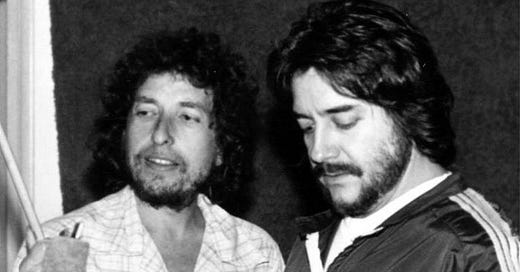




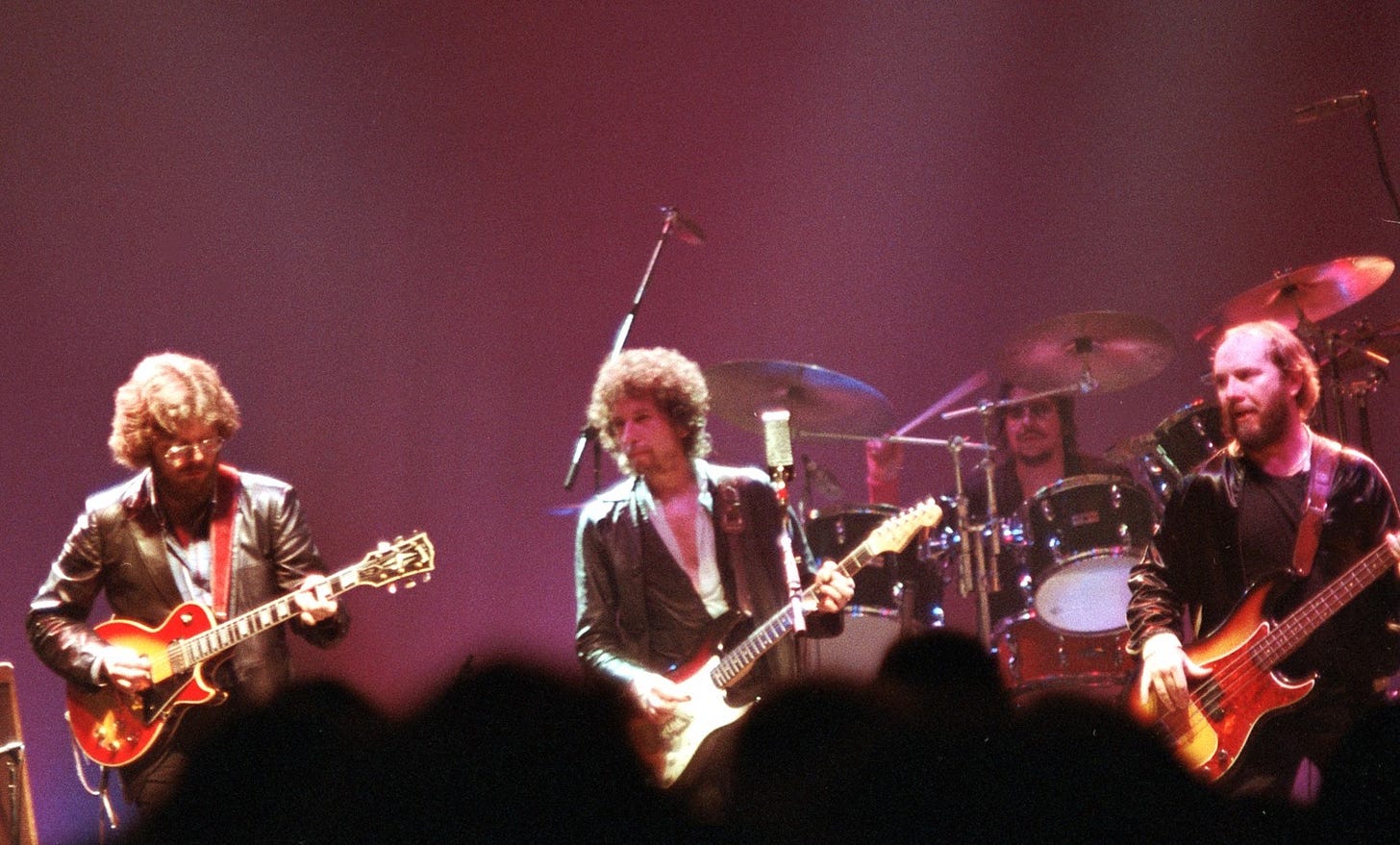
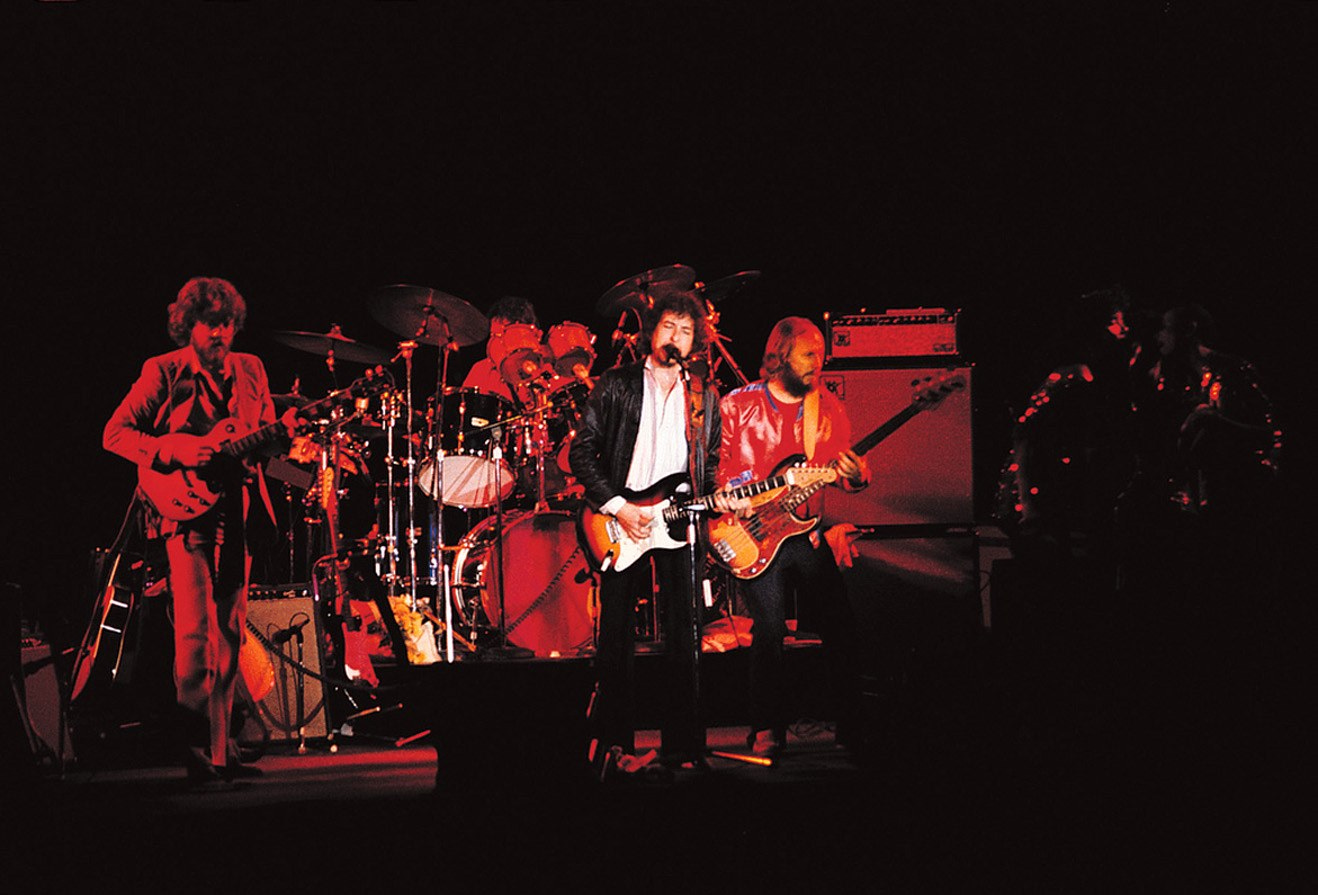
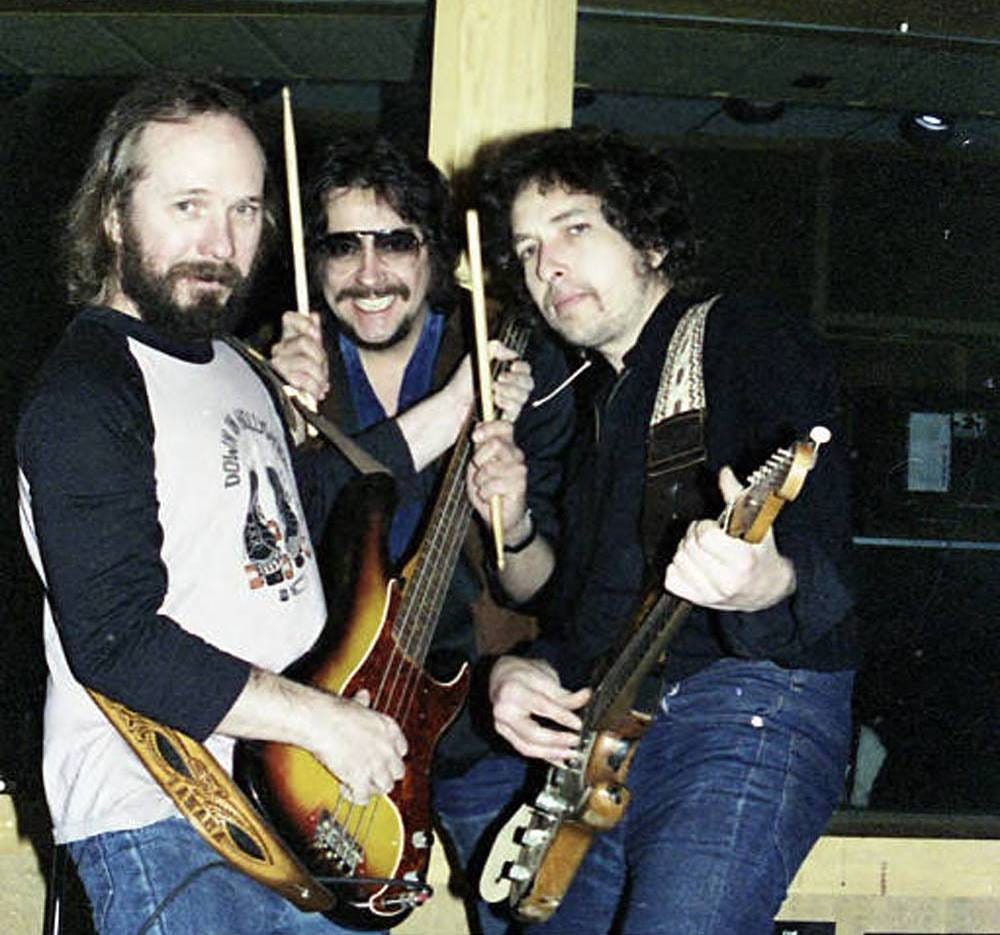
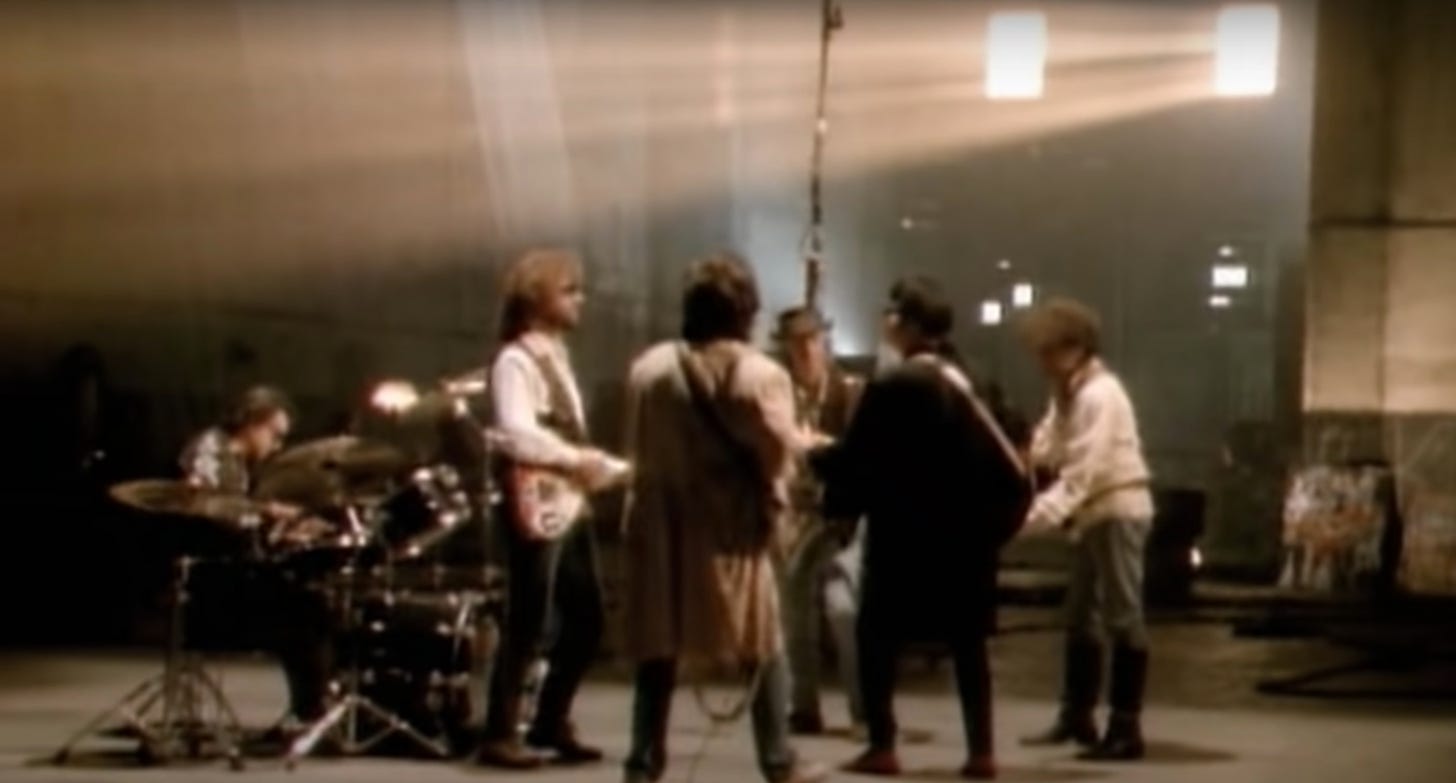
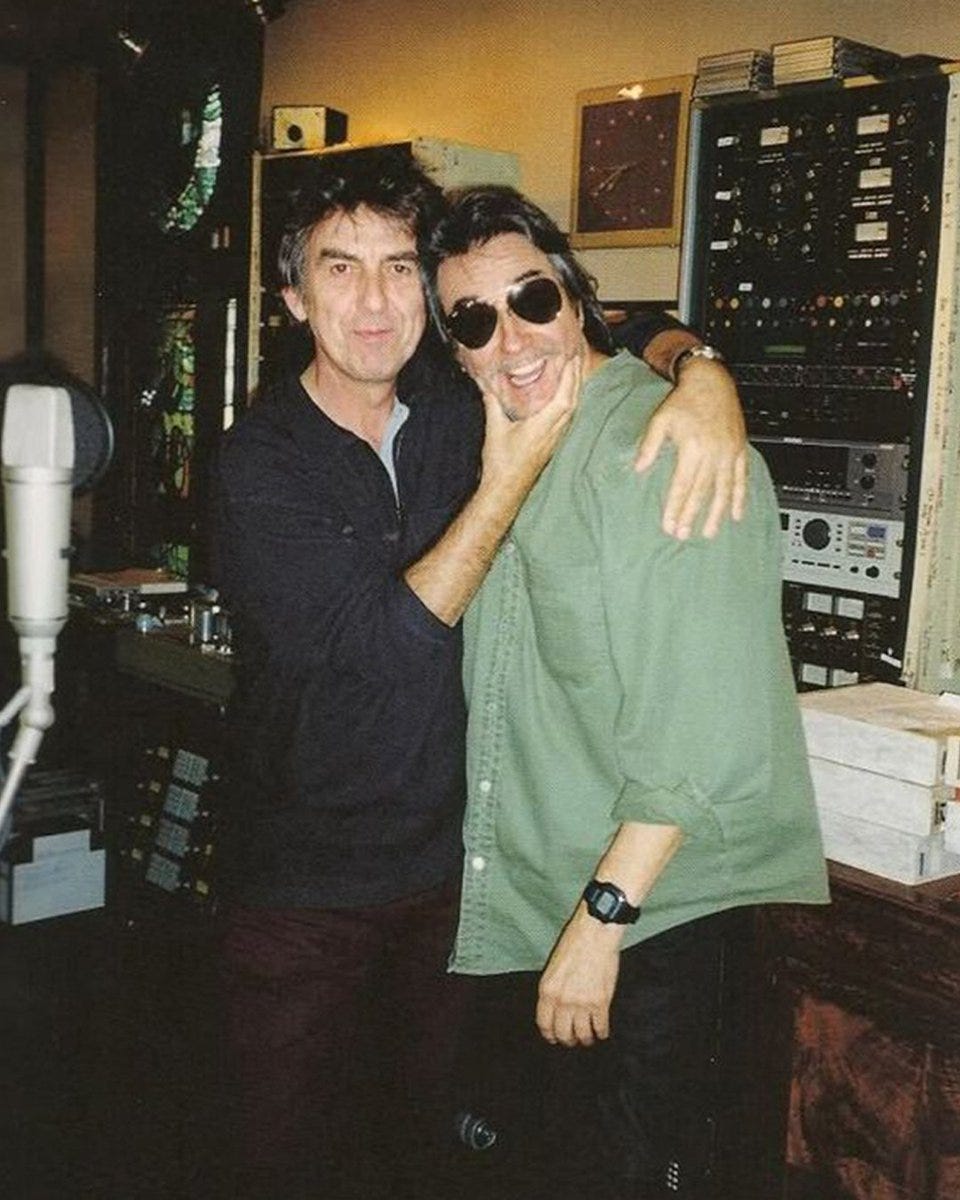
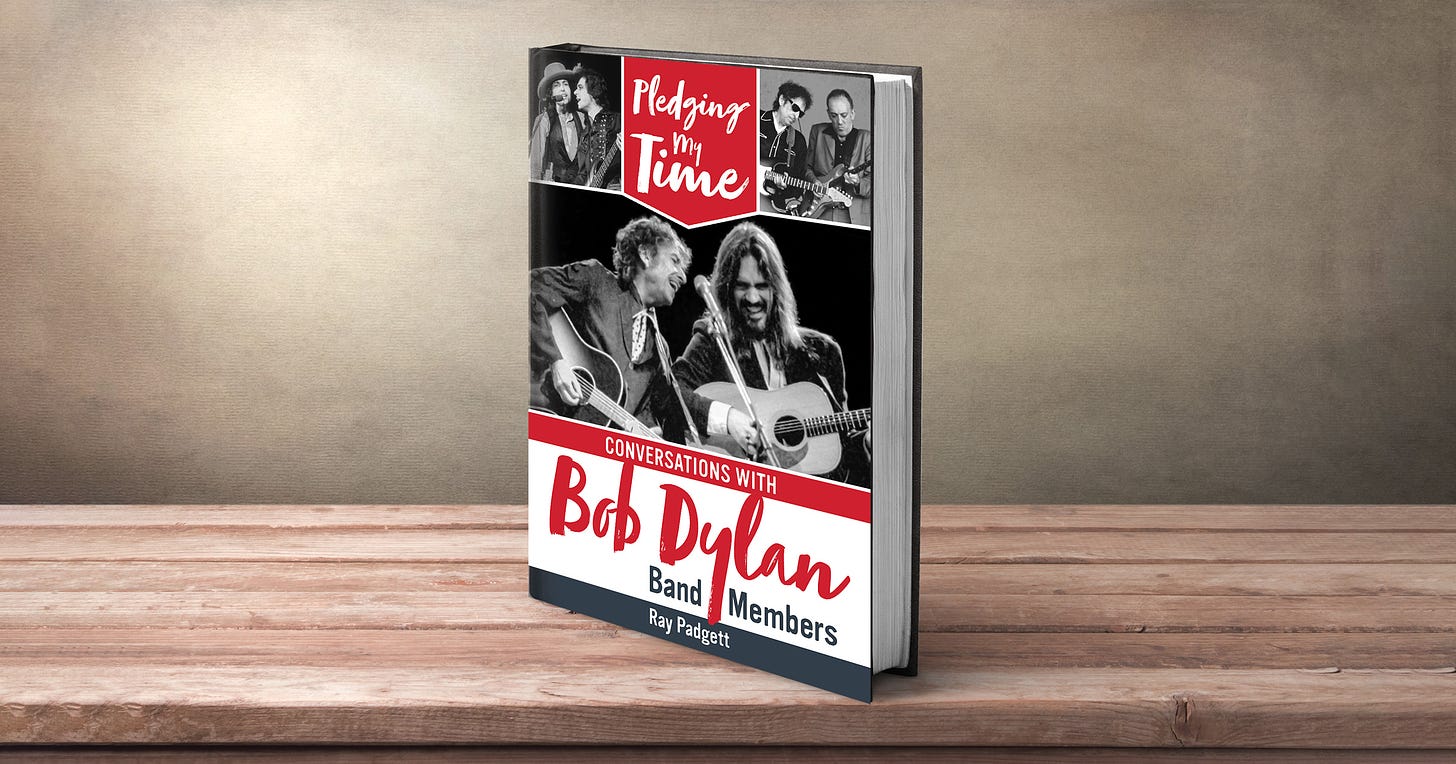
Nice stuff mate ... We should share Dylan stuff! 👍 The orchestra performance was stunning, knocked me off my chair way back then!
Always learn something new from your interviews and research. This was an especially good one. Thanks.